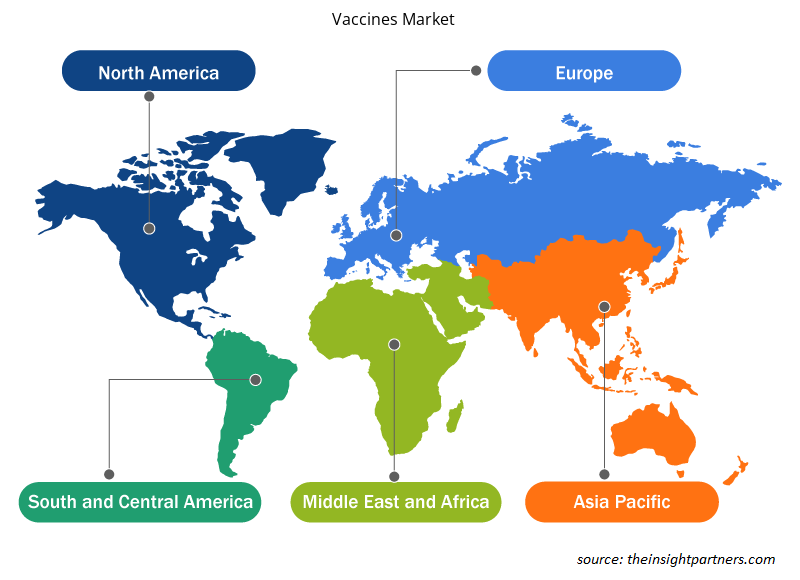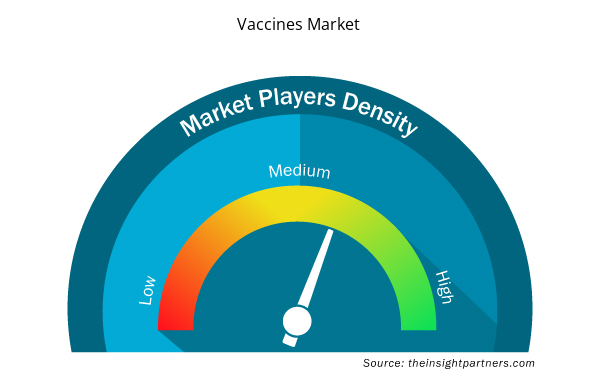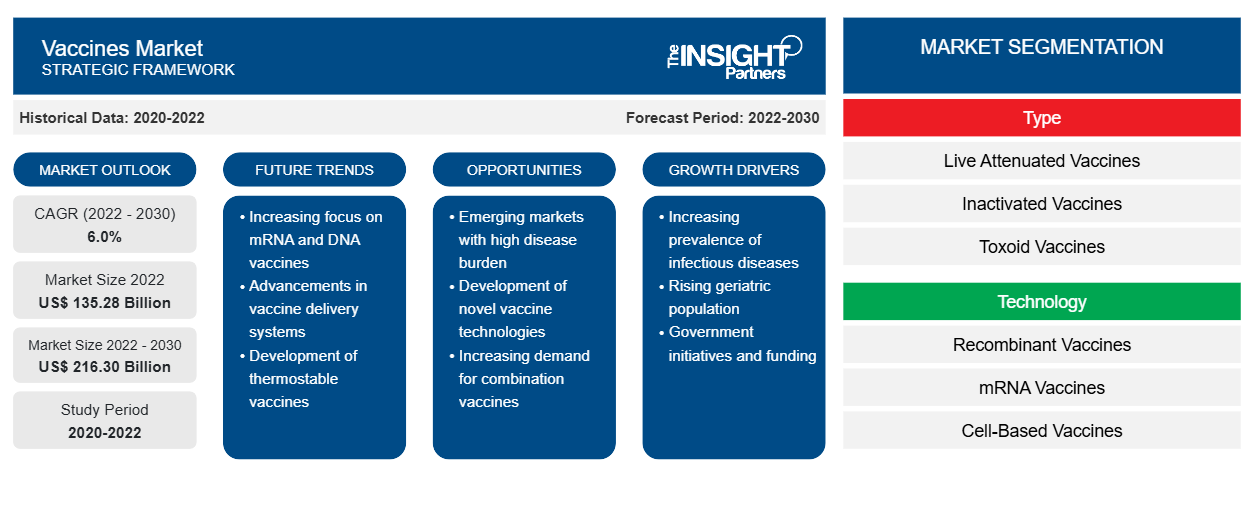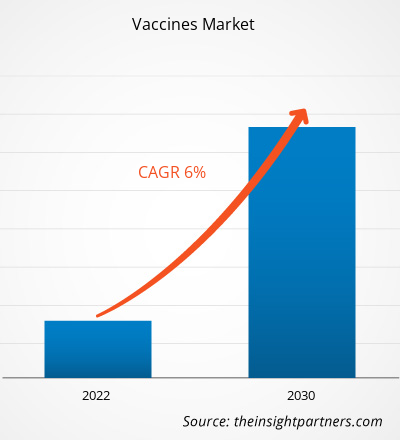[研究报告] 疫苗市场规模预计将从 2022 年的 1352.8 亿美元增长到 2030 年的 2163.0 亿美元;预计 2022 年至 2030 年市场复合年增长率为 6.0%。
分析师观点
疫苗市场分析解释了市场驱动因素,例如传染病患病率上升和 COVID-19 大流行期间疫苗接种率增加。此外,疫苗开发创新预计将在预测期内引入新的市场趋势。根据类型,市场细分为减毒活疫苗、灭活疫苗、类毒素疫苗、亚单位和结合疫苗等。减毒活疫苗部分在 2022 年占据最大市场份额。根据应用,疫苗市场分为人乳头瘤病毒 (HPV)、癌症、MMR、DPT 等。HPV 部分在 2022 年占据最大市场份额。按给药途径,疫苗市场分为口服、鼻腔和注射。注射剂部分在 2022 年占据最大市场份额。按年龄划分,在 2022-2030 年的预测期内,儿科疫苗部分将占全球疫苗市场的更大份额。按最终用户划分,疫苗接种中心和计划部门将在 2022-2030 年期间占据全球疫苗市场的最大份额。
疫苗是一种生物制剂,可提供针对特定传染病或恶性疾病的主动获得性免疫。疫苗制剂通常含有一种负责模拟致病微生物的药剂,通常由微生物的弱化或灭活形式、毒素或其表面蛋白之一制成。疫苗可以是预防性的,也可以是治疗性的。
市场洞察
传染病不断增加
根据康涅狄格州公共卫生部2020年报告,康涅狄格州2020年记录的传染病病例数如下。
2020 年康涅狄格州报告疾病病例 | |
疾病 | 全部的 |
甲型肝炎 | 15 |
流感 | 98 |
疟疾 | 4 |
结核 | 54 |
SARS-CoV-2 | 200,379 |
来源:Insight Partners 分析
此外,下表列出了美国卫生防护中心 2020 年报告中值得关注的传染病:
著名传染病 | |
疾病 | 全部的 |
SARS-CoV-2 | 8,847 |
水痘 | 1,987 |
社区相关耐甲氧西林金黄色葡萄球菌感染 | 813 |
登革热 | 22 |
结核 | 3,656 |
来源:Insight Partners 分析
在所有传染病中,SARS-CoV-2 在 2020 年至 2022 年期间达到历史最高水平,而其他疫苗接种率(包括登革热、水痘、结核病等)则较低。然而,由于全球病例不断增加,SARS-CoV-2 疫苗接种率很高。根据 2021 年发布的英国公共卫生报告,英国 12 个月 DTaP/IPV/Hib/HepB3 疫苗接种覆盖率增加了 0.1% 至 92.2%,轮状病毒疫苗接种覆盖率增加了 0.3% 至 90.6%。然而,MenB2 下降了 0.1%,与上一年相比占 92.3%。此外,英国 NHS 报告显示,2022 年 12 月,共有 88.9% 的成人养老院居民接种了 COVID-19 加强剂疫苗。因此,由于传染病发病率上升,疫苗接种的需求很高,从而导致整体市场增长。
市场趋势
疫苗研发创新
由于 COVID-19 疫情加速了技术采用,全球疫苗开发可能会发生变化。例如,mRNA 疫苗创新和新的给药方法(包括鼻腔内给药)是最具创新性的疫苗开发方法。此外,制造商正在尝试不同的方法来改进这些疫苗,并以一种使其更有效、增强免疫原性、耐久性和整体疗效的方式提供它们。
此外,更精简的监管流程和临床试验方案标准化在将 COVID-19 疫苗的开发时间从 10 年缩短至 260 天方面发挥了关键作用,这是疫苗开发创新的另一个例子。这种创新的疫苗给药方法和有利的疫苗开发创新是 2022-2030 年预测期内市场增长的原因。
定制此报告以满足您的需求
您可以免费定制任何报告,包括本报告的部分内容、国家级分析、Excel 数据包,以及为初创企业和大学提供优惠和折扣
- 获取此报告的关键市场趋势。这个免费样品将包括数据分析,从市场趋势到估计和预测。
报告细分和范围
市场机会
治疗性疫苗开发
传统疫苗刺激抗体和免疫蛋白的产生,这些抗体和免疫蛋白针对病毒和细菌等特定病原体。同样,治疗性疫苗刺激免疫系统针对癌细胞并控制 HIV 等慢性感染的进展。此外,治疗性疫苗通常会刺激接受者的免疫系统减缓或阻止慢性疾病进展或针对癌细胞。此外,用于治疗非传染性疾病的治疗性疫苗涵盖了各种可能的配方、抗原和作用机制。因此,治疗性疫苗的开发将为预测期 2022-2030 提供丰厚的市场机会。
正在研发的治疗性疫苗示例 | |
指征 | 开发阶段 |
卵巢癌 | 第 1 阶段 |
多发性骨髓瘤 | 第 1 阶段 |
1 型糖尿病 | 临床前 |
急性髓性白血病 | 3 |
间皮瘤 | 2 |
来源:Insight Partners 分析
基于类型的洞察
根据类型,疫苗市场细分为减毒活疫苗、灭活疫苗、类毒素疫苗、亚单位和结合疫苗等。减毒活疫苗部分在 2022 年占据了最大的市场份额。减毒活疫苗是非常有效的疫苗,用于预防多种疾病,包括流感、水痘、麻疹、脊髓灰质炎和结核病。根据世界卫生组织 (WHO) 的报告,季节性流感病例近 10 亿例,其中包括 500 万例重症病例。此外,它每年导致约 290,000 至 650,000 例呼吸道死亡。减毒活流感疫苗 (LAIV) 被证明有利于对抗人群感染。例如,LAIV 可以为 65 岁以下的成年人提供高达 90% 的保护,为 65 岁以上的成年人提供高达 40% 的保护。上述因素是 2022-2030 年预测期内该领域市场增长的原因。
基于应用的洞察
根据应用,疫苗市场分为人乳头瘤病毒 (HPV)、癌症、MMR、DPT 等。HPV 细分市场在 2022 年占据了最大的市场份额。根据世卫组织的报告,HPV 在撒哈拉以南非洲 (24%) 的女性中非常普遍,其次是拉丁美洲和加勒比地区 (16%)、东欧 (14%) 和东南亚 (14%)。此外,全球每年有 625,600 名女性和 694,000 名男性患有 HPV 相关癌症。此外,2020 年,宫颈癌占女性 HPV 相关癌症的 93%。因此,由于病例不断增加,人群对 HPV 疫苗的需求很高,因为这些疫苗可以预防生殖器疣和大多数宫颈癌病例。此外,HPV 疫苗得到了美国食品和药物管理局 (USFDA) 的高度认可。“GARDASIL 9”就是美国食品药品监督管理局批准的 HPV 疫苗的一个例子。上述因素是 2022-2030 年预测期内该领域市场增长的原因。
基于给药途径的见解
就给药途径而言,疫苗市场分为口服、鼻腔和注射。注射剂在 2022 年占据了最大的市场份额。最常见的疫苗给药途径是注射剂,因为通过皮下或皮内途径注射疫苗可能会引起局部刺激、皮肤变色、炎症等。
此外,CDC 报告显示,DTaP、DT、HepA、HepB、Hib、HPV、IIV4、RIV4、ccIIV4、IPV*†、MenACWY、MenB、MMR‡、PCV13、PPSV23*†、RZV、Td、Tdap、TT、VAR† 是通过注射途径接种的常见疫苗。通过注射途径接种的各种疫苗是 2022-2030 年预测期内该细分市场增长的独立因素。
疫苗市场区域洞察
Insight Partners 的分析师已详尽解释了预测期内影响疫苗市场的区域趋势和因素。本节还讨论了北美、欧洲、亚太地区、中东和非洲以及南美和中美洲的疫苗市场细分和地理位置。

- 获取疫苗市场的区域特定数据
疫苗市场报告范围
| 报告属性 | 细节 |
|---|---|
| 2022 年市场规模 | 1352.8亿美元 |
| 2030 年的市场规模 | 2163亿美元 |
| 全球复合年增长率(2022 - 2030 年) | 6.0% |
| 史料 | 2020-2022 |
| 预测期 | 2022-2030 |
| 涵盖的领域 | 按类型
|
| 覆盖地区和国家 | 北美
|
| 市场领导者和主要公司简介 |
|
疫苗市场参与者密度:了解其对业务动态的影响
疫苗市场正在快速增长,这得益于终端用户需求的不断增长,而这些需求又源于消费者偏好的不断变化、技术进步以及对产品优势的认识不断提高等因素。随着需求的增加,企业正在扩大其产品范围,进行创新以满足消费者的需求,并利用新兴趋势,从而进一步推动市场增长。
市场参与者密度是指在特定市场或行业内运营的企业或公司的分布情况。它表明在给定市场空间中,相对于其规模或总市场价值,有多少竞争对手(市场参与者)存在。
在疫苗市场运营的主要公司有:
- 葛兰素史克
- 辉瑞
- 赛诺菲
- 默克
- 印度血清研究所 (SII)
免责声明:上面列出的公司没有按照任何特定顺序排列。

- 了解疫苗市场的主要参与者概况
区域分析
北美占据疫苗市场的最大份额。北美市场细分为美国、加拿大和墨西哥。美国占据该地区疫苗市场的最大份额。
政府对疫苗研发的支持不断增加,仅在美国就促进了疫苗生产。例如,2023 年 3 月,美国政府宣布投资 319 亿美元用于 mRNA 疫苗研究和采购。疫苗研究基于对美国政府与 mRNA 疫苗和技术相关的研究补助和采购合同的广泛分析。疫情后,美国公共资金中有 292 亿美元(92%)用于疫苗采购,其中 22 亿美元(7%)用于支持临床试验,1.08 亿美元用于支持制造和科学。此外,美国公司在疫苗审批方面也表现良好。例如,2023 年 9 月,辉瑞和 BioNTech 宣布获得美国食品药品监督管理局批准“补充生物制品许可申请(COMIRNATY 2023-2024 配方)”,适用于 12 岁及以上的个人,并授予六个月的紧急使用授权 (EUA)。新批准的疫苗可在美国各地的药房、医院和诊所购买。快速审批和政府对疫苗研发和生产的支持力度加大,使得美国在区域市场占据了主要份额。
预计亚太地区将在全球疫苗市场中实现最高的复合年增长率。亚太地区在研发支出中所占份额最大,拥有大量疫苗研发 (R&D) 方面的出版物和专利。此外,该地区拥有国有和私营制药公司以及进行疫苗研发的合同研究组织 (CRO)。此外,亚太地区国家采用多种供应方和需求方方法来激励对疫苗研发的投资。例如,亚太地区的高收入国家是产品开发伙伴关系的主要贡献者,它们启动了疫苗开发计划,以促进创新疫苗的生产和研究。
在 COVID-19 疫情期间,亚太地区许多高收入和中等收入国家建立了疫苗开发制造机构。亚太地区的区域机构和政府间组织帮助促进和协调疫苗研发的区域合作。因此,亚太地区实施疫苗开发计划以促进创新疫苗制造和研究活动的优惠政策是导致 2022-2030 年疫苗市场复合年增长率最高的独立因素。
该报告介绍了全球疫苗市场的领先企业。这些企业包括葛兰素史克、辉瑞、赛诺菲、默克、印度血清研究所 (SII)、阿斯利康、BioNTech、Biological E、科兴生物、国药集团和 Bharat Biotech。2022 年 8 月,葛兰素史克宣布收购 Affinivax, Inc.,旨在打造强大的专科药物和疫苗组合。此次收购包括下一代 24 价肺炎球菌疫苗,该疫苗目前处于第 2 阶段开发阶段,基于高度创新的多抗原呈递系统 (MAPS) 平台技术。MAPS 技术支持比传统结合技术更高的价数,对流行的肺炎球菌血清型的覆盖范围较小。它对许多单个血清型产生的抗体反应比目前的肺炎球菌疫苗更高。
2022 年 1 月,辉瑞公司宣布与 BioNTech 合作开展新的研究、开发和商业化,以开发用于预防带状疱疹的潜在首款基于 mRNA 的疫苗。此外,此次合作建立在该公司成功开发首款获批且使用最广泛的用于预防 COVID-19 的 mRNA 疫苗的基础上。
公司简介
- 葛兰素史克
- 辉瑞
- 赛诺菲
- 默克
- 印度血清研究所 (SII)
- 阿斯利康
- 生物技术
- 生物E
- 科兴
- 国药集团
- 印度生物科技公司
- 历史分析(2 年)、基准年、预测(7 年)及复合年增长率
- PEST 和 SWOT 分析
- 市场规模价值/数量 - 全球、区域、国家
- 行业和竞争格局
- Excel 数据集



Report Coverage
Revenue forecast, Company Analysis, Industry landscape, Growth factors, and Trends

Segment Covered
This text is related
to segments covered.

Regional Scope
North America, Europe, Asia Pacific, Middle East & Africa, South & Central America

Country Scope
This text is related
to country scope.
常见问题
A vaccine is a biological preparation that provides active acquired immunity against a particular disease. A vaccine consists of an agent that resembles or is a part of the disease-causing microorganism and is often made from weakened or killed forms of the microorganism, its toxins, or one of its surface proteins. The agent triggers the body's immune system to recognize the agent as a threat, destroy it, and to further recognize and destroy any of the microorganisms associated with that agent that it may encounter in the future.
Pfizer Inc., GlaxoSmithKline plc, Merck & Co. Inc, Sanofi, Johnson & Johnson Services, Inc., Panacea Biotec Limited, Astellas Pharma Inc., NOVAVAX, INC., VBI Vaccines Inc., and Bavarian Nordic are some of the major players in the vaccines market.
The growth of the market is attributed to the rising prevalence of infectious diseases, growing focus on implementation of immunization programs, and increasing support for vaccine development.
Trends and growth analysis reports related to Life Sciences : READ MORE..
The List of Companies - Vaccines Market
- GSK
- Pfizer
- Sanofi
- Merck
- Serum Institute of India (SII)
- AstraZeneca
- BioNTech
- Biological E
- Sinovac
- Sinopharm
- Bharat Biotech
The Insight Partners performs research in 4 major stages: Data Collection & Secondary Research, Primary Research, Data Analysis and Data Triangulation & Final Review.
- Data Collection and Secondary Research:
As a market research and consulting firm operating from a decade, we have published and advised several client across the globe. First step for any study will start with an assessment of currently available data and insights from existing reports. Further, historical and current market information is collected from Investor Presentations, Annual Reports, SEC Filings, etc., and other information related to company’s performance and market positioning are gathered from Paid Databases (Factiva, Hoovers, and Reuters) and various other publications available in public domain.
Several associations trade associates, technical forums, institutes, societies and organization are accessed to gain technical as well as market related insights through their publications such as research papers, blogs and press releases related to the studies are referred to get cues about the market. Further, white papers, journals, magazines, and other news articles published in last 3 years are scrutinized and analyzed to understand the current market trends.
- Primary Research:
The primarily interview analysis comprise of data obtained from industry participants interview and answers to survey questions gathered by in-house primary team.
For primary research, interviews are conducted with industry experts/CEOs/Marketing Managers/VPs/Subject Matter Experts from both demand and supply side to get a 360-degree view of the market. The primary team conducts several interviews based on the complexity of the markets to understand the various market trends and dynamics which makes research more credible and precise.
A typical research interview fulfils the following functions:
- Provides first-hand information on the market size, market trends, growth trends, competitive landscape, and outlook
- Validates and strengthens in-house secondary research findings
- Develops the analysis team’s expertise and market understanding
Primary research involves email interactions and telephone interviews for each market, category, segment, and sub-segment across geographies. The participants who typically take part in such a process include, but are not limited to:
- Industry participants: VPs, business development managers, market intelligence managers and national sales managers
- Outside experts: Valuation experts, research analysts and key opinion leaders specializing in the electronics and semiconductor industry.
Below is the breakup of our primary respondents by company, designation, and region:

Once we receive the confirmation from primary research sources or primary respondents, we finalize the base year market estimation and forecast the data as per the macroeconomic and microeconomic factors assessed during data collection.
- Data Analysis:
Once data is validated through both secondary as well as primary respondents, we finalize the market estimations by hypothesis formulation and factor analysis at regional and country level.
- Macro-Economic Factor Analysis:
We analyse macroeconomic indicators such the gross domestic product (GDP), increase in the demand for goods and services across industries, technological advancement, regional economic growth, governmental policies, the influence of COVID-19, PEST analysis, and other aspects. This analysis aids in setting benchmarks for various nations/regions and approximating market splits. Additionally, the general trend of the aforementioned components aid in determining the market's development possibilities.
- Country Level Data:
Various factors that are especially aligned to the country are taken into account to determine the market size for a certain area and country, including the presence of vendors, such as headquarters and offices, the country's GDP, demand patterns, and industry growth. To comprehend the market dynamics for the nation, a number of growth variables, inhibitors, application areas, and current market trends are researched. The aforementioned elements aid in determining the country's overall market's growth potential.
- Company Profile:
The “Table of Contents” is formulated by listing and analyzing more than 25 - 30 companies operating in the market ecosystem across geographies. However, we profile only 10 companies as a standard practice in our syndicate reports. These 10 companies comprise leading, emerging, and regional players. Nonetheless, our analysis is not restricted to the 10 listed companies, we also analyze other companies present in the market to develop a holistic view and understand the prevailing trends. The “Company Profiles” section in the report covers key facts, business description, products & services, financial information, SWOT analysis, and key developments. The financial information presented is extracted from the annual reports and official documents of the publicly listed companies. Upon collecting the information for the sections of respective companies, we verify them via various primary sources and then compile the data in respective company profiles. The company level information helps us in deriving the base number as well as in forecasting the market size.
- Developing Base Number:
Aggregation of sales statistics (2020-2022) and macro-economic factor, and other secondary and primary research insights are utilized to arrive at base number and related market shares for 2022. The data gaps are identified in this step and relevant market data is analyzed, collected from paid primary interviews or databases. On finalizing the base year market size, forecasts are developed on the basis of macro-economic, industry and market growth factors and company level analysis.
- Data Triangulation and Final Review:
The market findings and base year market size calculations are validated from supply as well as demand side. Demand side validations are based on macro-economic factor analysis and benchmarks for respective regions and countries. In case of supply side validations, revenues of major companies are estimated (in case not available) based on industry benchmark, approximate number of employees, product portfolio, and primary interviews revenues are gathered. Further revenue from target product/service segment is assessed to avoid overshooting of market statistics. In case of heavy deviations between supply and demand side values, all thes steps are repeated to achieve synchronization.
We follow an iterative model, wherein we share our research findings with Subject Matter Experts (SME’s) and Key Opinion Leaders (KOLs) until consensus view of the market is not formulated – this model negates any drastic deviation in the opinions of experts. Only validated and universally acceptable research findings are quoted in our reports.
We have important check points that we use to validate our research findings – which we call – data triangulation, where we validate the information, we generate from secondary sources with primary interviews and then we re-validate with our internal data bases and Subject matter experts. This comprehensive model enables us to deliver high quality, reliable data in shortest possible time.


 获取此报告的免费样本
获取此报告的免费样本